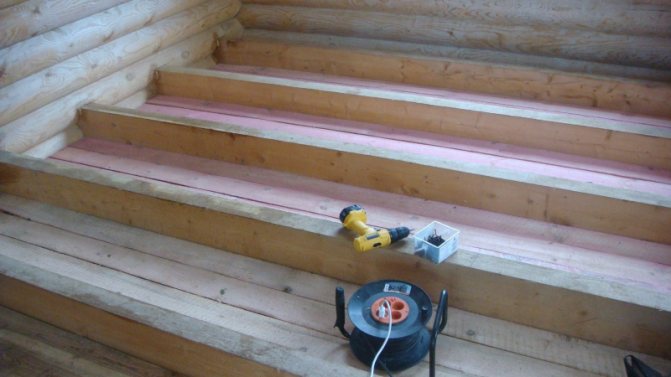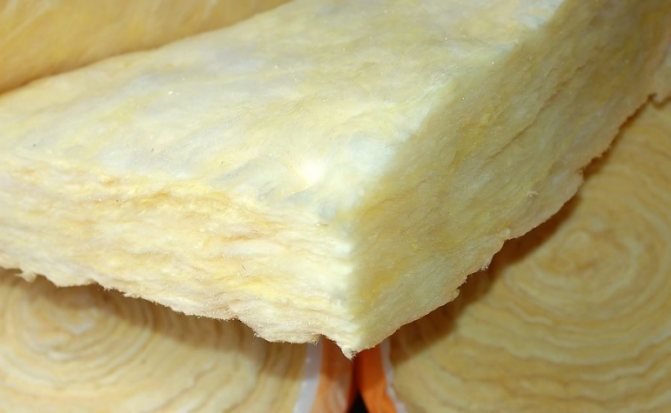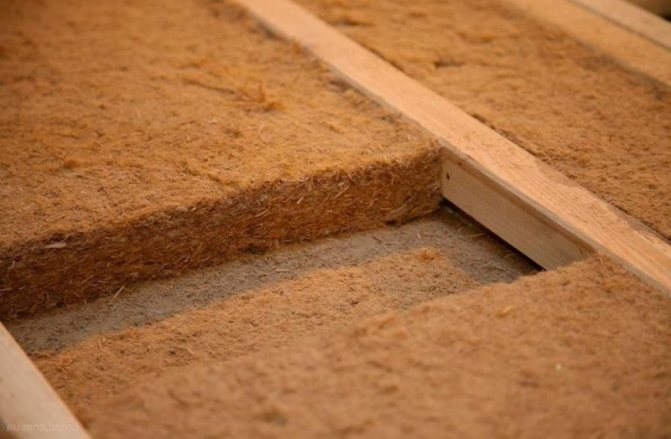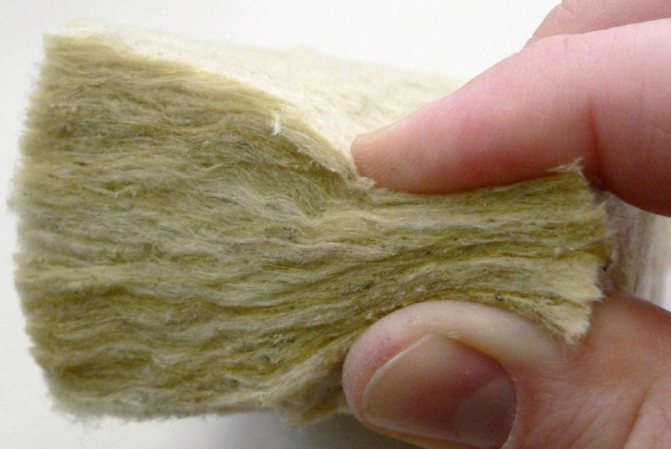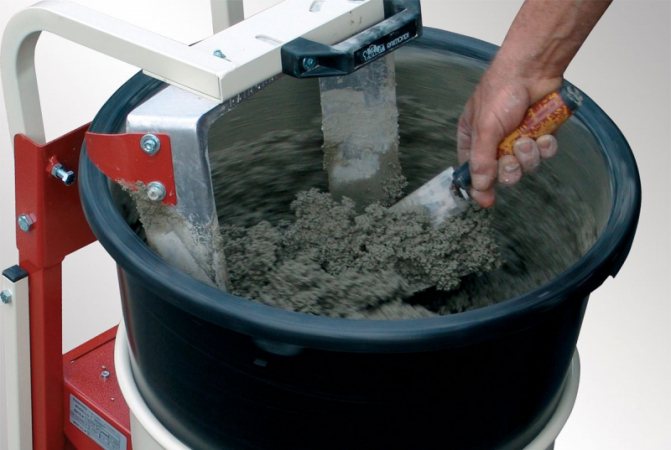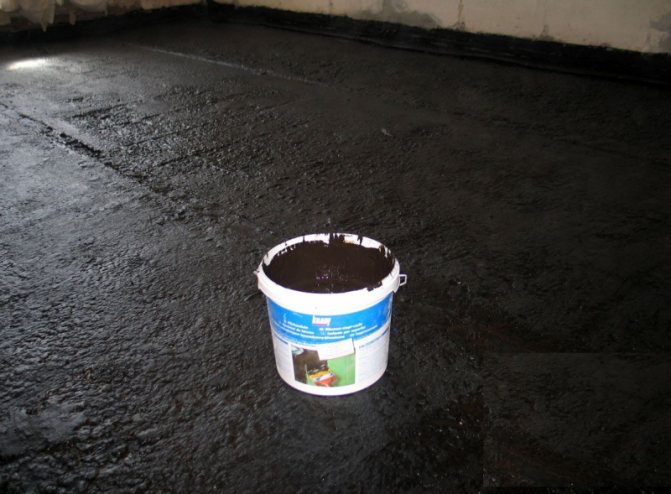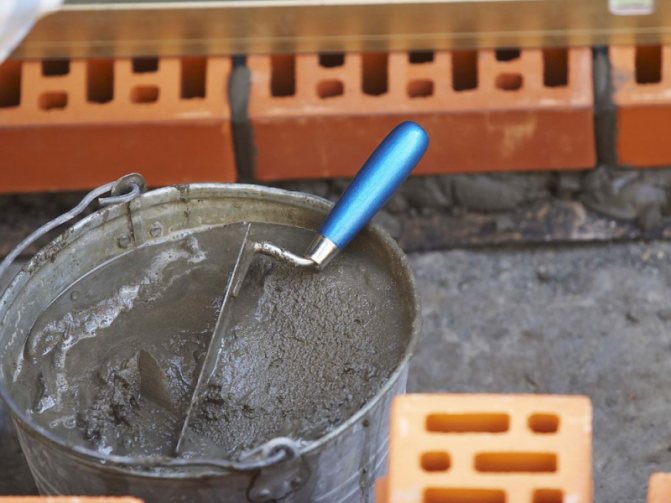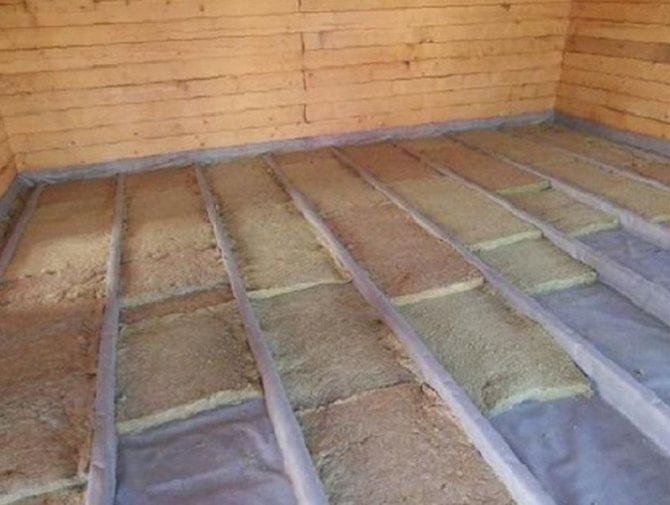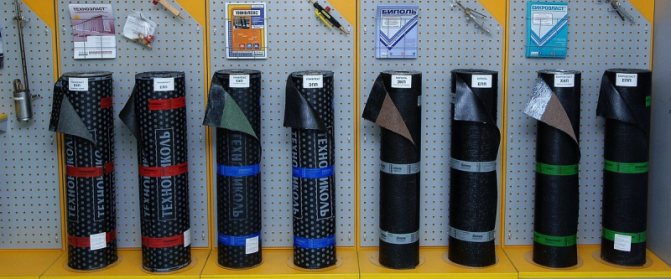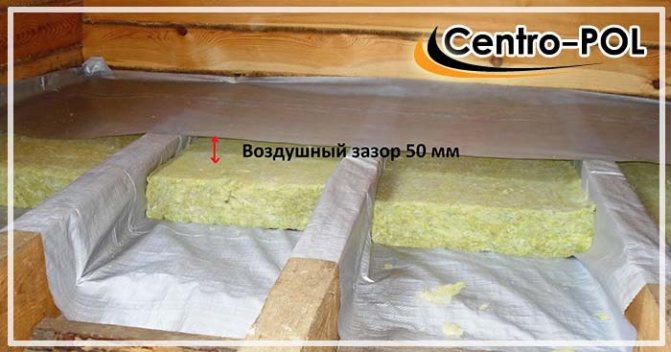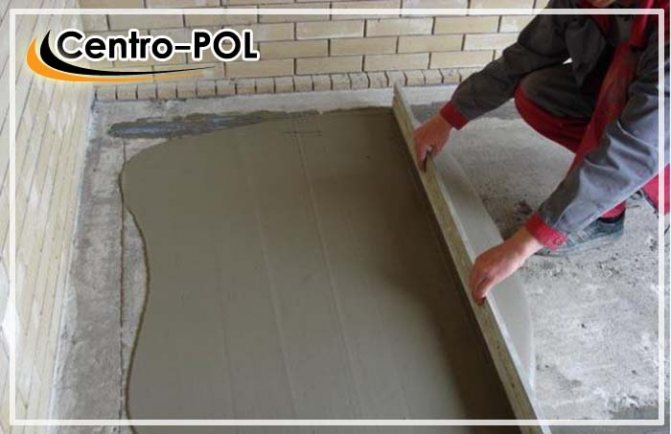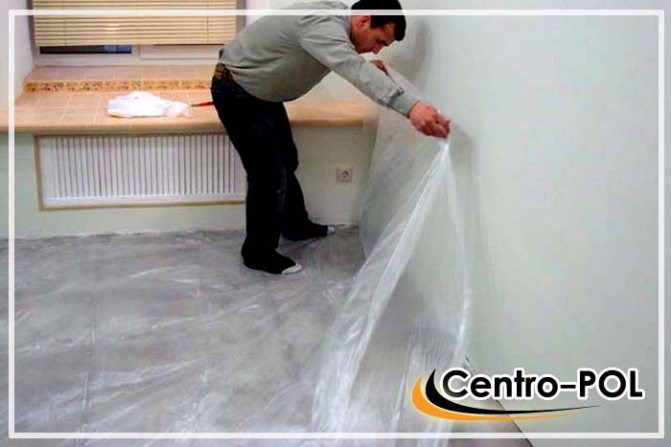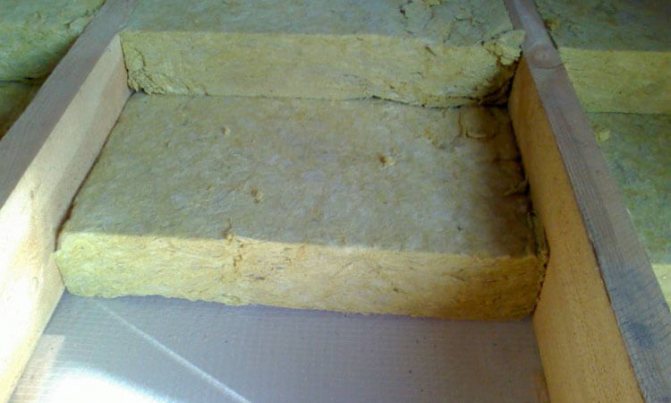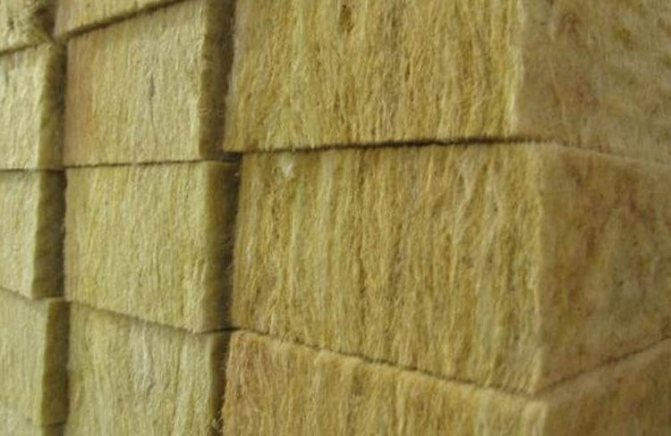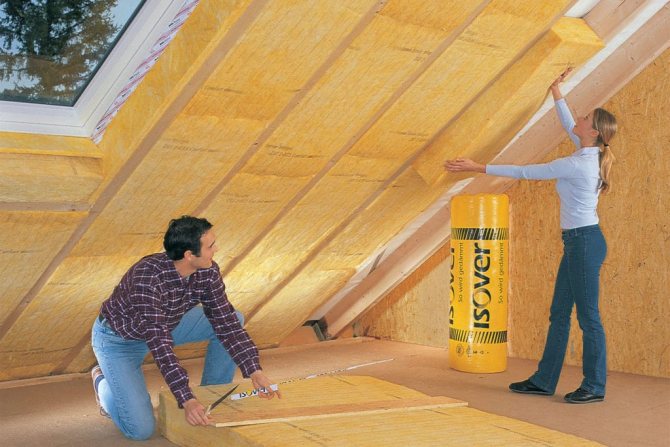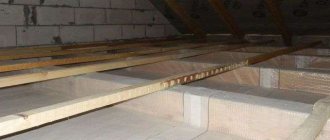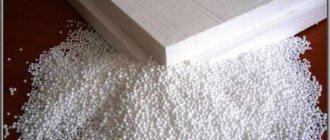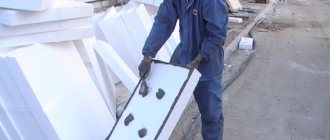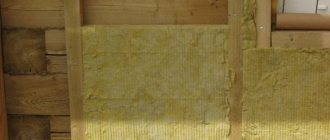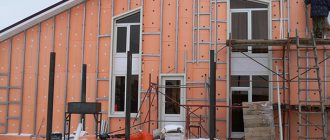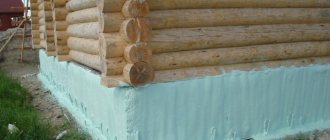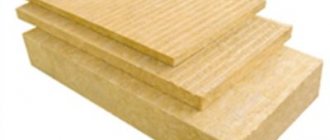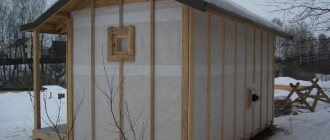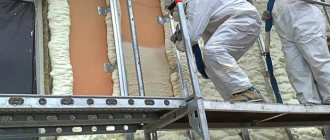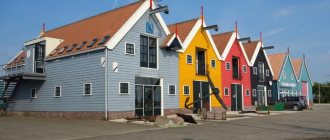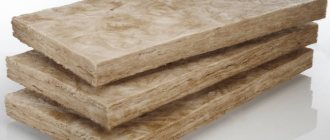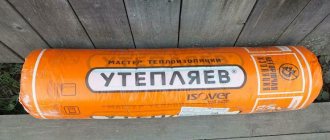Types of mineral wool for floor insulation
One of the stages of work on the arrangement of floor coverings is floor insulation.
According to building regulations, the insulation of interfloor ceilings must be carried out when the temperature difference between the upper and lower rooms is 10 ° C.
On the modern market of finishing materials, there is a huge range of materials suitable for thermal insulation of floors. Mineral wool is one of the most demanded thermal insulation materials. Let us analyze how, from the point of view of construction technologies, it is correct to insulate the floor with mineral wool.
Mineral wool is an inorganic substance (glass, basalt, granite, etc.), melted to a liquid state and foamed with compressed air in a special centrifuge. The result is a porous material with excellent thermal insulation and sound-absorbing properties.
Mineral wool goes on sale in the form of rolls, or denser rectangular slabs. Thermal insulation of the floor with mineral wool has both positive and negative aspects associated with the characteristics of this material.
It is optimal to use mineral wool in wooden houses, as it is resistant to fire
Among the technical characteristics of mineral wool, the following advantages should be noted:
- Excellent thermal insulation properties. In terms of its ability to retain heat, mineral wool is one of the best insulating materials.
- High rate of sound absorption. This allows the insulation to be used also to create sound barriers between floors and adjacent rooms.
- Resistant to fire. In the event of a fire, mineral insulation will not only not support combustion, but will act as a shield against the further spread of fire. At high temperatures, the material does not emit toxic substances.
- Environmental friendliness of the material. In the production of insulation, strict environmental monitoring of technologies and components used is carried out.
- Resistance to damage by rodents. Mice and rats do not arrange their nests in mineral wool and do not make their own moves in it.
- The lightness of the material. Due to its low density, the insulation does not create unnecessary loads on the supporting structures of the floors. Its density is about 35 kg / cubic meter.
- Resistant to thermal deformation. Minvata practically does not change its shape and volume when the air temperature changes. Therefore, when installing it, it is not required to arrange thermal seams and use a damper tape.
- Affordable cost. Minvata has excellent performance in terms of "price-quality".
If the house is located in a damp place, the use of cotton wool is contraindicated.
Like any other building materials, mineral wool also has its drawbacks, which, however, are much less than advantages.
- Insufficient strength. When working with mineral insulation and during its operation, care should be taken due to the tendency of the material to break and lose shape.
- Fear of dampness. This is the main disadvantage of mineral wool. When wet, it loses its shape, and at the same time all its thermal insulation qualities. Therefore, when mineral wool is used for floor insulation, special attention should be paid to its waterproofing.
- Great height. When the insulation is compressed, its thermal insulation properties decrease, therefore, the mineral wool should be used unchanged. If reducing the height of the ceilings is an unaffordable luxury for you, you should pay attention to thinner types of thermal insulation.
For the same reason, when working with the material, there is an increased separation of fine mineral particles in the form of dust.
Minvata is produced in the form:
- rolls;
- solid slab, they are more often used when insulating floors on the ground or
- flexible mat.
- A flexible mat made of water-repellent mineral wool is covered (laminated) with perforated kraft paper on one side. It is laid so that the laminated side is facing in the direction of the room to be insulated.
- Plates are also made on the basis of a hydrophobized material, and their sides have different rigidity. The stiffer side should be facing upwards when laying the boards. To avoid mistakes during installation, it is marked in blue. These slabs are predominantly used for single-layer thermal insulation along the ground.
The need for floor insulation
Mineral wool will effectively insulate floors
A little heat escapes from the room through the floors when compared to windows and front doors. However, if heat loss occurs through the floor in a dwelling, then it is impossible to call such a dwelling comfortable.
Cold floors are far more uncomfortable than cold walls or ceilings. The fact is that a significant part of the time that a person spends in a room is in direct contact with the floors, so the cold coming from the floors is felt much stronger than the cold coming from other structural elements of the room.
This is especially true for rooms located above unheated rooms - basements, cold basements, etc.
Insulation of attic floors is necessary for the same reason: in this case, the thermal insulation layer does not allow heat to escape through the ceiling of the lower room.
The choice of insulation
After the floors have been leveled, a layer of vapor barrier material should be laid. It is possible to choose the right material for vapor barrier only taking into account a fairly large number of factors. Therefore, we recommend that you study the literature and recommendations on the use of materials, or consult with a specialist in this field - he will recommend the optimal material for the characteristics of a particular insulated room.
Laying vapor barrier under plywood
The vapor barrier layer is laid with an overlap on the walls, along the height of the thermal insulation material, together with the lags.
All guide joists are installed in the right places and securely fastened. Now you need to install the mineral wool. Cut the mineral wool to the size of the grooves and place between the joists.
Attention! The thermal insulation material should fit snugly to the joists. There should be no gaps between them. This can be achieved by cutting pieces of insulation one centimeter wider than the distance between the lags.
If the ceiling height permits, you can install the mineral wool in two layers. In this case, we recommend laying the second layer of mineral wool in such a way that the joint of the pieces of mineral wool of the first layer falls in the middle of the pieces of the second layer.
Insulation laying
It is worth noting that unscrupulous builders often neglect this recommendation, since the work takes longer. However, this is the only way to avoid the occurrence of heat leakage points. Therefore, if you are hiring workers, and not insulating the floor with your own hands, make sure that they properly install the insulation.
Floor insulation scheme with mineral wool
A film of waterproofing material is laid on the thermal insulation material. It should also be chosen according to the characteristics of the room. If you want to do everything as best as possible, additional literature will help you, or contact a specialist.
Laying durable material such as plywood or planks
This stage will be the end of the floor insulation procedure.On top of the insulating material, a layer of durable material is laid on the logs, which will distribute the load. Fiberboard, chipboard, special drywall, plywood or ordinary boards are suitable.
After that, you can safely say that all the work is finished. It remains only to lay the flooring and put things in order in the room.
We suggest that you familiarize yourself with how much you can build a bathhouse
Many materials are used to insulate the floors of a wooden house. The simplest and most inexpensive can be called expanded clay or sand, which is poured between the rough and final coating. They are hygroscopic and protect the boards from rotting, the spread of fungus and provide ventilation. However, free-flowing nonmetallic heaters have their own drawback - over time, their hygroscopicity decreases.
Today on the market you can find many materials for the insulation of a wooden house. In addition to good thermal insulation, it must meet the basic requirements:
- ecologicaly clean;
- be safe for the occupants of the house;
- long service life.
o Mineral wool. It can be slag, stone and glass. The release form is also varied - plate, roll, mat. Mineral wool has a high density, does not burn, conducts heat poorly and is quite economical. The main disadvantage is considered to be low moisture resistance.
When using mineral wool, the vapor barrier and ventilation should be well thought out. The side of the board that is not covered with foil should be on the bottom.
When buying mineral wool, they carefully read the composition, since the impregnation often contains substances hazardous to the body. The richer the yellow color of the material, there it is more dangerous.
In hardware stores, the following are more in demand:
- Izovol is a mineral fiber product. A distinctive feature is high hydrophobic efficiency in comparison with conventional mineral wool. Additionally, it has low thermal conductivity, non-flammable, biologically and chemically resistant.
- Rockwool is a basalt mineral oil. Its peculiarity is that it does not cake, does not lend itself to deformation and shrinkage, like mineral wool. Rockwool resists mechanical stress well. The material is additionally used for sound insulation, since the porous structure absorbs noise of any frequency well. Like Izovol, Rockwool does not conduct heat well, does not burn and is resistant to biological and chemical influences.
- Expanded polystyrene - has a high rate of thermal insulation. It is resistant to moisture and does not absorb water, keeps its shape well during temperature changes, is durable, environmentally friendly, durable and is not subject to the destructive effects of microorganisms. Styrofoam is easy to handle and use.
- Penofol is a modern heat insulator. Sold in rolls, it is a heater with a layer of foil. The thickness and weight are small. The base may be different, but in most cases it is penofol (expanded polyethylene). Thermal insulation properties are retained under high mechanical stress. Laying takes place with an overlap or butt. The seams must be glued with metallized adhesive tape. Penofol does not require an additional layer of hydro and vapor barrier, since the foil already performs these functions.
- Ecowool is a natural cellulose heat insulator. They bind fibers with boric acid and lagnin (organic antiseptic). The uniqueness of the material is that it does not absorb water and brings it out. In the composition there are no components hazardous to health. Ecowool is fire- and bio-resistant, absorbs sound well and does not conduct heat. A special spray is used for application, but the material consumption then increases by 40%.
- Izolon is a new material in construction. With a thickness of 2-10 mm, it has good heat and sound insulation, has high moisture resistance, is not subject to decay and is durable.
Ordinary sawdust can be used for insulation.This heat insulator has been used for many centuries. Natural material is quite cheap and completely safe for the body. Sawdust is often left behind after building a house. This is the most affordable insulation for a wooden house.
Sawdust is added to some building materials:
- sawdust concrete consists of sawdust, cement, sand and water;
- granular heat insulator - sawdust, glue and fire retardant antiseptic;
- arbolit - sawdust with cement and chemical additives;
- wood blocks - sawdust, cement and copper sulfate.
The thickness of the insulation layer plays an important role. It is calculated individually for each house, taking into account the design features, climate and type of insulation. The formula is given in SNiP 23-02-2003:
- R is thermal resistance. It is determined from the tables in the SNiP appendix.
- A is the coefficient of thermal conductivity. For each type of insulation, it has its own. The value is indicated by the manufacturer or can be found in the SNiP tables.
- The material is non-flammable. It becomes an obstacle to the spread of open fire, therefore, floor insulation with mineral wool is at the same time additional fire protection of the house structure. The declared resistance to high temperatures is striking - over 1000⁰C.
- Increased thermal insulation properties. This type as a heater with the correct organization of thermal insulation is a guarantee of constantly warm floors.
- Excellent soundproofing. This is an important factor for the choice, since not every material of this direction on the market can boast such a level of sound insulation. Such indicators make it possible to insulate with mineral wool not only floors, but also ceilings and walls.
- High frost resistance.
- Resistance to active chemicals and bio-effects.
- Immunity to rot, fungi and rodent attacks.
- Vapor permeability. "Breathable" layer of thermal insulation favorably distinguishes mineral wool from other heaters.
- Ease of installation. Low weight with sufficient thickness and ease of filling any spaces with it greatly facilitate installation work.
- Crease resistance. In dry form, the mineral wool does not change its shape, which also simplifies its installation.
- Profitability. Low cost, since the manufacturing process itself does not require special costs.
The process of warming floors
Floor insulation with mineral wool occurs in several stages:
- Subfloor surface preparation.
- Insulation flooring directly.
- Installation of pre-finishing coating.
Let's analyze the whole process of work in stages.
It is very important to repair the rough base, lay waterproofing
If you are going to insulate old floors, then you will have to completely remove all flooring from them, exposing the floors down to concrete floor slabs or rough wooden floors.
Then we carefully examine their surface for cracks, holes, cracks, etc. All holes and problem areas found should be repaired with putty, plaster or sealant.
Next, you should check the bearing surface for a horizontal slope, dips and bumps. If the defects are not so significant, they can be corrected with putty or plaster.
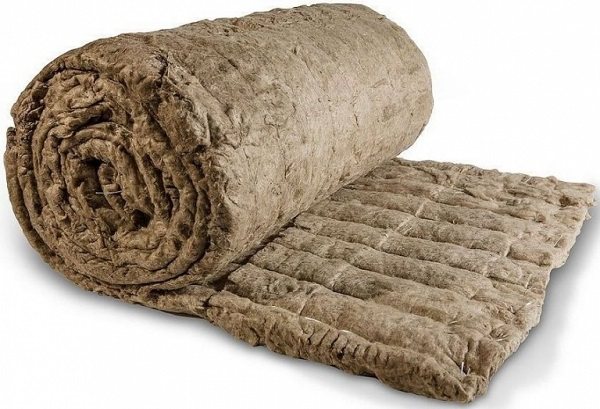
If the elevation differences are too large, then you will have to resort to a more radical method - pouring a leveling concrete screed. To do this, you can use ready-made dry mixes sold in hardware stores, or prepare a sand-concrete mortar with your own hands.
If the maximum thickness of the screed is expected to be less than 3 cm, then coarse sand should be used as a mortar filler.
Gravel can be added to add strength to the mix.
If the leveling layer of the concrete screed is more than 3 cm, then it is recommended to use fine gravel or crushed stone to increase the strength.
The table shows the proportions that should be observed when mixing concrete mortar of the M-100 brand, which is most often used for floor screed.
Cement used
Mass composition *, kg
* Values are in order - cement. sand. rubble
Waterproofing
Roofing material and its analogs are glued with special mastics
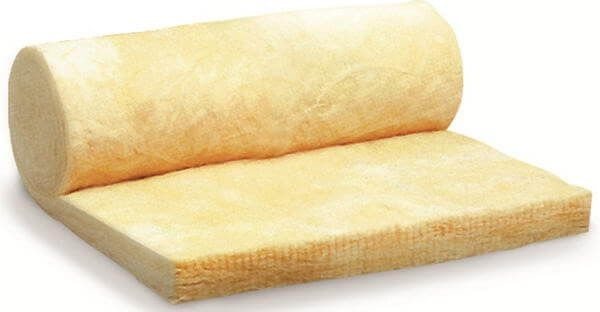

The device of a moisture-vapor barrier layer is a very important stage of work. The fact is that mineral wool is extremely afraid of moisture. When wet, it loses its thermal insulation properties and does not restore them. Moreover, moisture that has got inside it remains inside for a long time, causing the multiplication of mold and fungi, passing to the floors and walls.
Apply the coating waterproofing with a brush or roller.
To do this, you can use roll waterproofing - roofing felt or its modern counterparts. Roofing material sheets are glued to the floor surface using polymer or bituminous mastics.
On the modern market, there are also self-adhesive types of waterproofing, for example, "TechnoNIKOL". The canvases are laid with an overlap of at least 10 cm, and the seams are carefully coated with mastic. For greater reliability, you can lay waterproofing in two or three layers, so that the joints of the canvases of different layers do not coincide.
How to insulate the floor: step-by-step implementation
The whole process of installing floor insulation can be divided into several main stages:
- surface preparation. The structure of the concrete pavement should not contain cracks, large level differences. If they are available, work is carried out to eliminate such defects - filling the leveling layer and filling with the repair composition of cracks and chips. waterproofing; laying insulation. After calculating the required amount of insulation, you can start installing it. It must fit evenly over the entire surface of the subfloor. One of the advantages of a basalt heat insulator is that it does not have to be fixed to the floor surface. When laid evenly, the weight of the top cement screed will provide a proper pressure rating. vapor barrier; subfloor under the topcoat or reinforced screed. Before pouring a protective concrete layer, a vapor-permeable film must be installed. Complete waterproofing can lead to moisture concentration between the heat insulator and the screed. The properties of such a film are the ability to pass water molecules, preventing significant passage of moisture. This will protect the concrete surface from the damaging effects of moisture and ensure its removal from the concrete structure through a layer of mineral wool. After installing the concrete screed, the main decorative coating can be installed.
Thermal insulation work with mineral wool is carried out on various surfaces, and the execution patterns may differ.
- Compacted soil. This is a common construction of floors in private houses in the countryside. In this case, the floor covering is laid with support on logs, which are installed directly on the ground, more precisely on a compacted bulk layer of gravel, slag, etc. Minvata, after filling the expanded clay layer and the waterproofing device, is laid between the logs. The mats should be laid tightly without any gaps. A vapor barrier material is laid on top of the insulation, after which a reinforced screed or subfloor is laid. Ground surface with brick posts. The latter serve as a support for attaching the lag. Expanded clay is poured to the upper level of the posts, bars are filled along the length of the log, on which the wood flooring between the logs is attached. Going to the logs of 5 cm, waterproofing is laid on them and mineral wool is laid. On top of the insulation and the lag, a vapor barrier is spread with an overlap, gluing the joints with tape. Concrete surface (rough screed or floor slab). First, a layer of vapor barrier is laid with the foil side to the plate. Next, place (with or without crate) mineral wool slabs. For better insulation, they are laid evenly and without gaps. On top - again a layer of vapor barrier, but with the foil side - inside the room.
Features of work on floor insulation with mineral wool
The insulator is a material of a fiber structure on a synthetic basis, which is saturated with an inert gas that retains heat well. Mineral wool for floor insulation is sold in the form of rolls and slabs of various sizes and densities, which affect the choice of installation method.
The rolls have low rigidity, and a wooden crate is made for them in advance. They are ideal for large areas because the total length of the gaps between the individual parts is minimal. Products are produced in widths of 1.2 and 0.6 m and a maximum length of 10 m. Usually, two layers of roll insulation are laid to ensure an optimal thickness of 100 mm.
Plates are more often than rolls used for laying on the ground. They differ in the presence of hydrophobized components. They have two-sided rigidity: one side is harder, so their installation should be carried out taking into account the manufacturer's requirements. In order not to be mistaken, markings are applied to the surface in blue.
In houses, mineral wool is used in such cases:
- For insulation of floors above a cold basement;
- For heat and sound insulation of interfloor ceilings;
- To protect the attic floor.
The thickness of the product depends on the climatic conditions and the purpose of the room. The floors of houses in the southern regions and summer cottages, which are used only in summer, are covered with samples of 50 mm thickness.
The same materials are used on the floors. This is due to the need to maintain the height of the room and the low temperature requirements in these places. In country houses, the thickness of mineral wool for floor insulation can be up to 200 mm.
The product has a harmful effect on humans due to the presence of fine fibers that irritate the skin. When working, you should adhere to the elementary safety rules:
- Avoid contact with the material when laying. Wear goggles, gloves, long sleeves, and a respirator. Change after work.
- Keep rolls and slabs out of the reach of children.
- Prevent fibers from spreading throughout the apartment. After warming, immediately clean the place of work.
Mineral wool absorbs moisture well, therefore, to protect it from getting wet, the composition of the insulation "cake" must necessarily include hydro and vapor barrier films.
The rolls have low rigidity, and a wooden crate is made for them in advance. They are ideal for large areas because the total length of the gaps between the individual parts is minimal. Products are produced in widths of 1.2 and 0.6 m and a maximum length of 10 m. Usually, two layers of roll insulation are laid to ensure an optimal thickness of 100 mm.
Plates are more often than rolls used for laying on the ground. They differ in the presence of hydrophobized components. They have two-sided rigidity: one side is harder, so their installation should be carried out taking into account the manufacturer's requirements. In order not to be mistaken, markings are applied to the surface in blue.
- For insulation of floors above a cold basement;
- For heat and sound insulation of interfloor floors;
- To protect the attic floor.
- Avoid contact with the material when laying. Wear goggles, gloves, long sleeves, and a respirator. Change after work.
The temperature regime in the house determines the level of living comfort. A wooden building is faster and easier to heat, but heating alone will not be enough. Heat must be kept in the house. Good thermal insulation reduces overall heat loss by 25%. It is ineffective to insulate walls without a floor.
A country house made of wood is environmentally friendly housing, so all building materials used must also meet environmental requirements.Previously, sawdust, wood concrete, and polystyrene were used for this. Modern materials are easier to install and more efficient. Insulated floors prevent mold formation in the house and reduce heating costs.
Completion of work
After reliable insulation of the floor, it's time to think about how the surface will look. It is recommended to put (and fix) a strong and thick material on top of the layer of thermal insulation, evenly distributing the load over the logs. It can be a regular board (for example, inch), fiberboard, chipboard, construction drywall, thick plywood. It is permissible to lay carpets on top of the selected coating, lay laminate, parquet and so on; further steps are at the discretion of the residents of the house.
In conclusion, a useful tip: do not try to save on heat-insulating material by purchasing products from little-known manufacturers at extremely low prices.
Problems arising from excessive frugality of money translate into even greater spending. Shrinkage of a heat insulator, the formation of fungus, mold, microorganisms, an unpleasant odor inside the premises of the house, rotting of lags are only part of the troubles, the elimination of which will significantly hit the budget.
It is not difficult to insulate the floor on your own. It is enough to follow the instructions given above, carefully follow the progress of work and not be mistaken with the purchase of mineral wool. If all conditions are met, the floor of your house will be insulated for many decades to come.
Advantages and disadvantages of floor insulation with mineral wool
These include an impressive volume in height, since when organizing a frame from a lag, the thickness of the insulation layer is taken into account.
- Moisture resistance is a quality that does not characterize all types of mineral wool. They require waterproofing, since when moisture enters, they shrink and practically lose their positive characteristics.
- Fiberglass is more water resistant, its water absorption is two times lower, besides, after drying, it does not lose its qualities, however, this material is not very convenient for installation: the glassy structure and flowability of small glass fragments from its layers creates certain inconveniences.
- Many are confused by the presence of chemical additives such as formaldehyde in the composition of certain types of mineral wool, which can negatively affect human health. Although it should be noted that there is no single conclusion of numerous debates around this topic so far.
However, it is safe to say that stone wool for floor insulation is quite safe. Moreover, it has not only high sound and heat insulating characteristics and increased fire resistance, but also sufficient water-repellent properties, side by side with high resistance to mechanical stress.
The heat insulator has the qualities that make it the most common material for floor insulation:
- It does not burn, does not emit dangerous vapors under the influence of fire. Often used in fire hazardous areas.
- Due to its low weight and ease of cutting to obtain fragments of the required sizes and shapes, the installation time is reduced.
- When laying, no fixing to the base is required.
- The use of mineral wool increases the sound insulation of the floors.
- The cost of mineral wool is lower than the price of other heaters.
- Fungus and mold do not take root in the fibers. The material doesn't like mice.
- When dry, the product does not change its shape and size when the temperature fluctuates.
- The material does not require replacement during the entire life of the house.
When choosing a floor covering method, you should know the disadvantages of mineral wool:
- In most cases, the height of the ceilings will decrease due to a sufficiently thick heat-insulating layer, which includes the logs.
- The product absorbs water well, so the “cake” must contain hydro and vapor barrier, which increase the cost of work.
- Mineral wool should not be used in damp rooms.
- It does not burn, does not emit dangerous vapors under the influence of fire. Often used in fire hazardous areas.
- In most cases, the height of the ceilings will decrease due to a sufficiently thick heat-insulating layer, which includes the logs.
The main advantages of a mineral wool insulator
Below we list the advantages of mineral wool:
- 1. Excellent heat-saving capabilities - an ideal solution for floor insulation in a wooden or brick house.
- 2. Non-flammable base - a perfect material that is considered fireproof, capable of resisting significant heating temperatures up to 1000 degrees.
- 3. Frost resistance - the ability to use for insulation of houses in cold climatic zones.
- 4. Increased sound absorption data guarantees the creation of an optimal indoor climate and the best conditions, which is beneficial not only for the treatment of floors, but also walls and ceilings.
- 5. Resistance to the formation of fungus, rot and attacks of small rodents.
- 6. Resistance to temperature extremes and deformations.
- 7. High vapor permeability of mineral wool, which provides a breathable effect.
- 8. Ability to withstand exposure to biological and chemical agents.
- 9. Lowest price and simple production process.
- 10. Poor wrinkling allows the material to be transported, stored and assembled without problems in any conditions.
Mineral wool also has a number of disadvantages. Among the main problems, one should highlight the significant height of the material, its volume, which must always be taken into account when building the frame and laying the logs. In addition, the composition is not moisture resistant, due to which, when making insulation, it is additionally necessary to perform waterproofing. Even a slight ingress of moisture on mineral wool will lead to a change in its shape, a decrease in volume and a loss of positive properties.
Speaking of glass wool, it should be noted that it absorbs moisture much worse, dries quickly, and easily returns to its original appearance when wet. However, the specific composition, the presence of numerous glass, free-flowing elements in the structure create some inconveniences and limitations during installation.
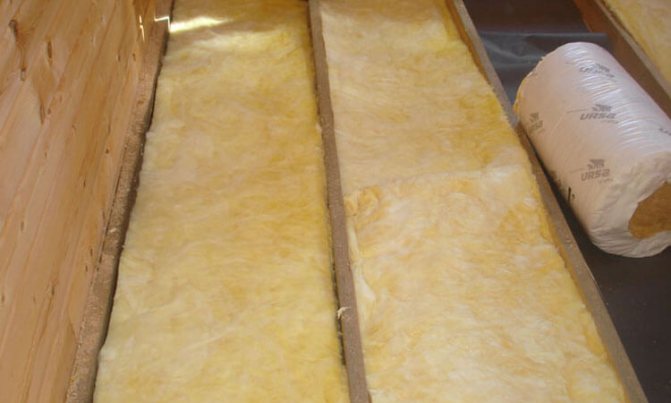

From the point of view of human health safety, mineral wool also has features. In particular, it contains many chemical elements, including formaldehydes, which, to a greater or lesser extent, pose a certain threat.
As for stone wool, experts say that it is the safest and most reliable material with good sound-absorbing and heat-insulating properties. In addition to this, the composition is fire resistant, able to withstand mechanical stress and has water repellency.
Specialist recommendations
- For floor insulation, both rolled mineral wool and slabs or mats are suitable. The use of mineral wool slabs greatly facilitates the work and minimizes the possibility of gaps.
- Expanded clay can be used to level the floor together with the screed.It will not only help to make the floor even, but will also become an additional layer of thermal insulation.
- You should not try to save money on heat-insulating material by choosing the cheapest mineral wool of unknown quality and from an unknown manufacturer. This can lead to problems such as strong shrinkage of the material (and, as a result, loss of thermal insulation properties), the appearance of mold and mildew, and a violation of the environmental situation in the room. It is better to buy mineral wool from well-known manufacturers, for example, Knauf.
- For best results, we recommend that you consult additional literature and product specifications. This will help you choose the right mineral wool, taking into account the characteristics of a particular room. It will be good if you can consult with a professional builder.
Good luck!
We offer you to familiarize yourself with Correct sauna: how to steam properly for health, how often you can visit the Finnish sauna, how much you can sit, photos and videos
Modern materials - structure, advantages
A positive temperature in a house is the first step towards a comfortable living in it. Constantly walking drafts and the invariable law of physics - cold air rushes down. Thermal insulation will not be superfluous in any house: wooden, brick, block.
Manufacturers have proposed a new material for insulating any surfaces - mineral wool! Thin fibers from molten rocks, slag, glass are intertwined with a polymer into a loose, fluffy texture. So it turned out mineral wool. It is divided into several types, depending on the main component:
- Glass, limestone, sand, soda.
- Stone, mountain representatives, basalt, limestone, diabase, dolomite.
- Blast furnace slags.
Mineral wool floor insulation technology
Thermal insulation of the base is carried out in a specific sequence. Deviation from the technology of installation work will lead to constant heat leakage and may cause loss of properties of the heat insulator. Refinement of each type of overlap has its own characteristics.
When buying a product, you need to familiarize yourself with its characteristics and check the quality of the product.
The main parameter of mineral wool is density. In residential premises, material is most often used in rolls with characteristics of 35-40 kg / m 3 or slabs up to 90 kg / m 3. Solid blocks are also used in industrial facilities.
For laying under the screed, especially dense slabs with a stiffness of more than 150 kg / m 3 with very low thermal conductivity are used. The panels are made in small sizes, which is convenient for work. In addition to heat-insulating properties, they have excellent sound-insulating and fire-fighting qualities. They are very expensive, so they are not popular among users. Moreover, such products are not produced in Russia. For example, Stroprock wool with a density of 161 kg / m 2 is supplied from Poland.
The declared characteristics of mineral wool at home cannot be checked, but according to some signs it is possible to determine its quality:
- Ask to show the storage conditions of products in the warehouse. If it lies outdoors, inspect the packaging. Polyethylene breaks are not allowed. Unprotected goods must be kept in a dry place.
To insulate the floor along the logs with mineral wool, the flooring must be completely dismantled. Therefore, check the condition of the coating before use. If there are no defects, remove it carefully in order to return it to its place after repair.
Further work is performed as follows:
- Inspect the logs, install new ones to replace the rotten ones. Soak the items with antiseptic agents against mold and insects. Place shims or wedges under the movable battens.
When insulating wooden floors at the stage of building a house, mineral wool can be laid on a prepared base. The volume and order of work when insulating the floor with mineral wool will depend on its design.
Mineral wool insulation instructions:
- Clean the concrete floor from dust and dirt. Seal the gaps with cement or other mortar. Remove irregularities with a cement-sand screed. If the alignment is not carried out, then an uneven load will act on different areas, which can cause the destruction of the slab.
If the base is made of soil, insulation can be performed without rigid ties.
Floor insulation works with mineral wool:
- Compact and level the ground. Fill the area with a 150-200 mm thick sand-soil cushion and compact it carefully. Align the surface horizontally. If the ceiling is being finalized over a warm basement, the layer can be thinner.
Thermal insulation with mineral wool for the floors of attics and attics
Thermal insulation of these rooms is often performed in low-maintenance houses equipped with special roof ventilation. Together with the insulation, there must be a vapor barrier film.
Warm air, together with water vapor, rises to the attic, in the absence of a vapor barrier, it will pass through the cotton wool and condense on the rafters, which will eventually lead to their rotting. Some of the moisture will remain inside and will cause a loss of thermal insulation properties.
To avoid problems, perform operations according to the technology of floor insulation with mineral wool in attics:
- On the attic floor, lay a vapor barrier with an overlap on the wall and adjacent areas. Glue the joints with reinforced tape.

